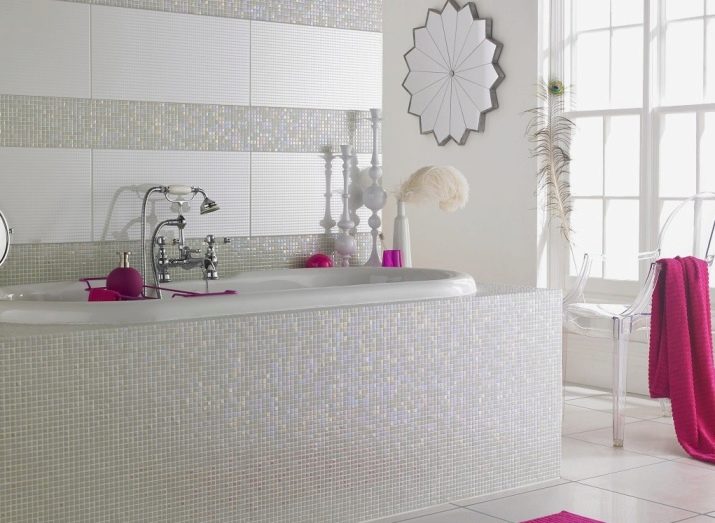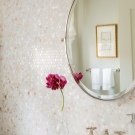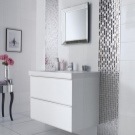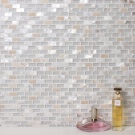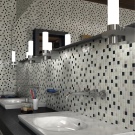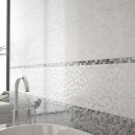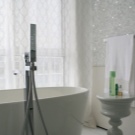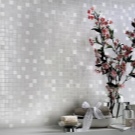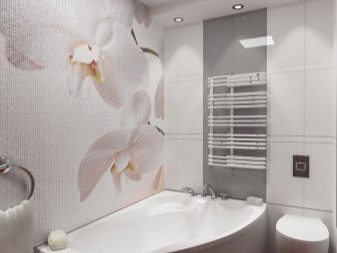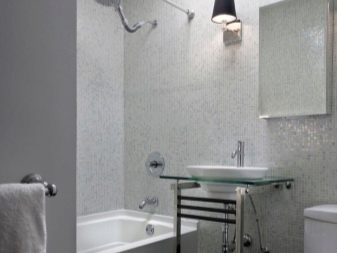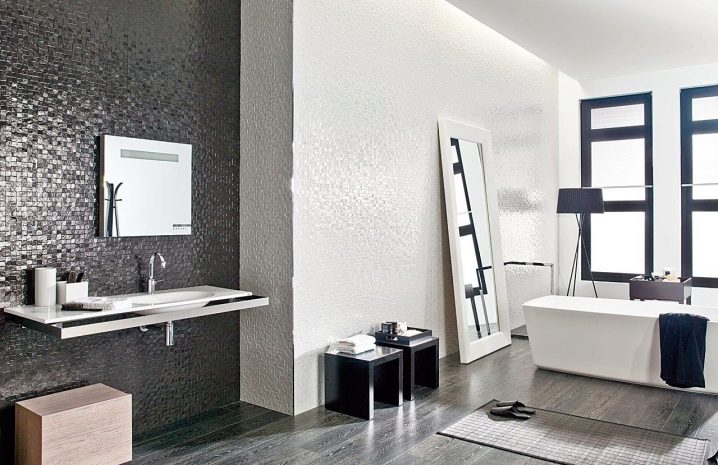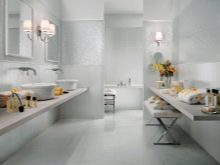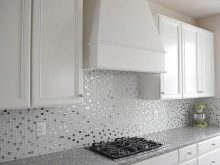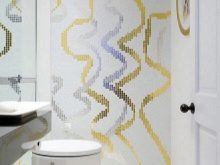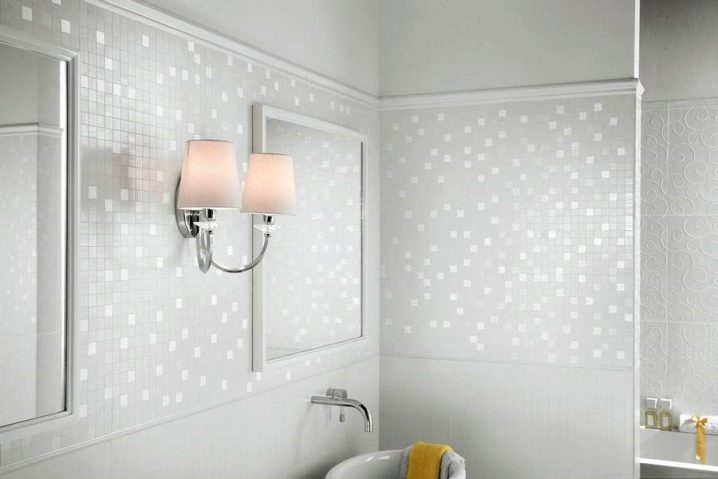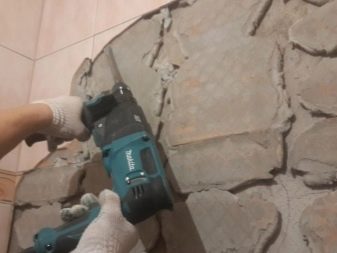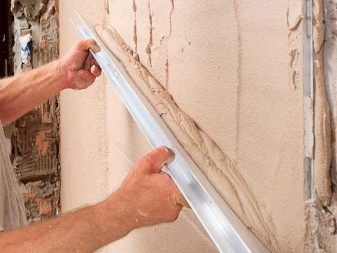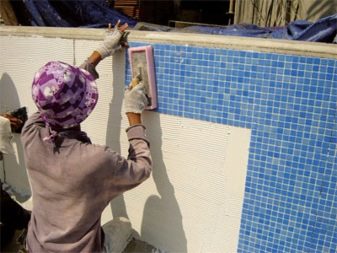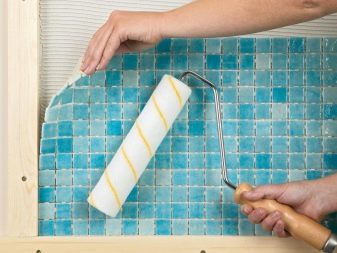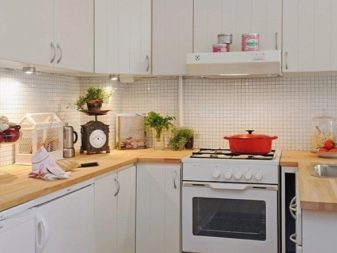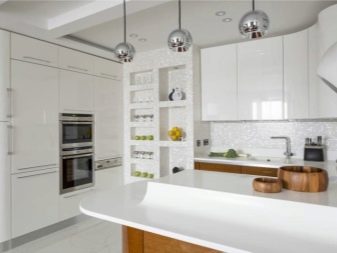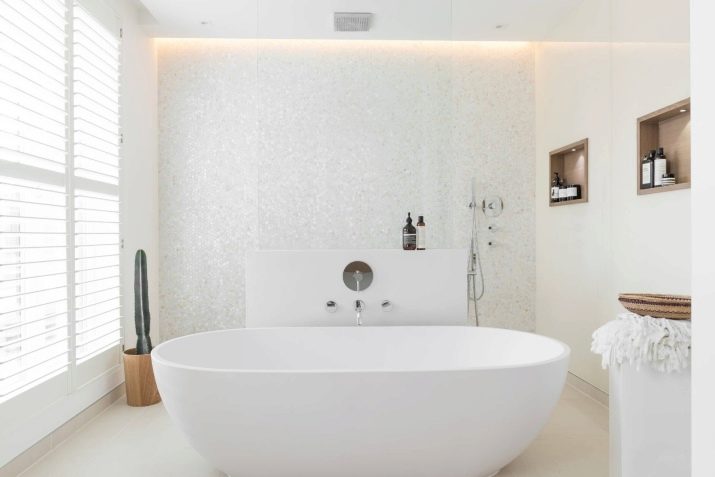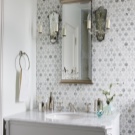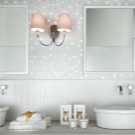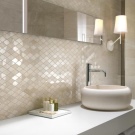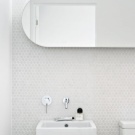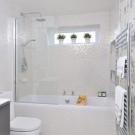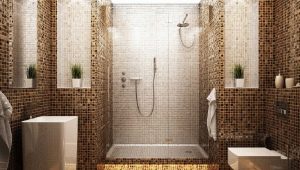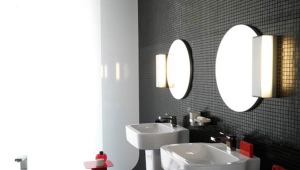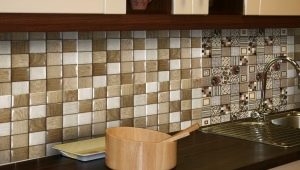White mosaic: advantages and features of design
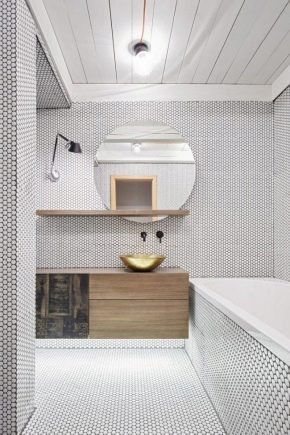
For every homeowner who is faced with the problem of facing the bathroom, the actual problem is the choice of material for this purpose. Therefore, the white mosaic may be the best option for this kind of coverage.
Features white mosaic
It is well known that it is the bathrooms that have a high level of humidity and constant temperature differences. In addition, the bathtub and the sink with it are often combined with the toilet in the same bathroom, which is the reason for the high demands on the cleanliness and sterility of such rooms. For the treatment of surfaces in bathrooms, products consisting of complex organic compounds are used, therefore, the facing material used for finishing the sanitary facilities should not only be easily cleaned with their help, but also be resistant to the effects of such chemicals.
For white mosaic used natural stone. Mosaic of this kind most often goes to the lining of the floors. Natural stone is known to be durable, durable and resistant to mechanical stress, chemicals and moisture. Mosaic of natural stone is made of granite, marble, jasper or onyx. The high cost of natural material is compensated by its durability and elegance of appearance.
The glass mosaic tile along with natural similar products from a stone or ceramics is popular among those consumers who prefer classical decisions of a decor of the dwelling. The color gamut of the decorative material presented in a wide range, thanks to the brightness of the coatings with all sorts of pastel shades, makes it possible to realize the most daring design ideas.
Mosaic for the bathroom is resistant to high levels of humidityand its universal anti-slip surface is a reliable protection against temperature fluctuations and fluctuations of humidity in such a room. Daily intensive impact on its surface does not affect the appearance of the decorative tiled mosaic and does not harm its base.
The use of glass mosaic saves the wearer from the need to perform complex procedures for the care of it, as well as natural stone, it is resistant to chemical organics and water.
Ceramic mosaic tiles with a glossy or matte surface are among the most common types of cladding. Among the collections with the usual rectangular geometry can be found products of round or irregular shape that can give additional originality to the interior design of the bathroom.
The popularity of ceramics is due to a reasonable balance of price and quality and a wide range of its textures. White tile, the most commonly used for decorative bathroom design, together with the effect of sterility visually expands the interior space, which is especially valuable for small-sized objects.
Some nuances of finishing
To avoid the effect of hospital sterility, it is necessary to slightly dilute the white color. It is not necessary to do this with a different shade or wall color. You can use accessories whose color is different from the classic.An example here is the use of a tint approaching white, but with a barely perceptible hint of yellowness or beige tint, and a combination of pastel shades is also possible.
If the design turns out to be slightly cool, when a combination of white and blue is observed in the decor, then the placement of the lighting in several tiers will smooth out and kindle it. It will be very uniform, and with its help it will be possible to avoid association with the brightness of the hospital room. At the same time, accessories and furniture of almost all colors will be organically combined with a white-beige tint of wall decoration. To emphasize the luxury of the bathroom is useful to apply a brown, purple and burgundy palette.
If to dilute the design not to use color, but structure, then for this purpose it is necessary to apply mosaics of different types of stone, glass and ceramics with matt-glossy surfaces. To give additional contrast to the interior of the room, it is useful to treat the joints with black grout.
Mounting technology
Laying the mosaic should begin with leveling the walls. Although the mosaic is a very small tile, in contrast to the usual tile, it not only does not hide minor irregularities, but also makes them even more noticeable.Therefore, the prepared surface of the wall, ceiling or floor is leveled and treated with plaster mix or dry plaster.
Taking into account the high humidity in the bathroom, the mosaic surface is treated with an antiseptic compositionto avoid mold and fungus under mosaic tiles. For reliable retention of the mosaic surface is pre-treated with a primer to create the necessary adhesion. Laying mosaic is depending on what role is assigned to it in the interior. If it is considered as a partial decoration element of the design, then its installation should be performed flush with the main wall decoration. If it is necessary to cover all the walls with it, then the laying should be carried out from the bottom corner, moving in strips upwards. If it is decided to use a combination with white of several shades and colors, then each individual element should be numbered in advance.
Applying glue to the surface is done with a notched trowel, after which the required element is applied to the glue layer and gently pressed from top to bottom.The adhesive is applied uniformly so that it accurately reproduces and duplicates all the bends of the surface profile. Do not apply glue on too large an area so that it will not clutch before the mosaic coating is installed.
The adhesive composition for fastening a tiled mosaic may be a polymer or be prepared on the basis of cement. It may have a gray color of ordinary cement mortar or white. If the room is made in bright colors, it is better to use white glue for this, since, unlike ceramic tiles, mosaic tiles are somewhat transparent, therefore gray glue will make the mosaic surface darker.
The next element is placed at the same distance as inside each mosaic matrix. After the glue dries, the joints are rubbed with a special grout.
Advantages and disadvantages
Summing up, it should be noted a long service life, mechanical strength and abrasion resistance of this material. Differing in the breadth of choice of materials for its production, colors and textures, resistance to pattern fading and discoloration, as well as temperature differences, mosaic tiles are very convenient for concealing defects in walls and floor surfaces.
Although the need for preparatory work before laying such a coating is minimal, this type of coating has some negative properties that should be considered when choosing it. So, although manufacturers supply low-end mosaic versions to the market, the cost per square meter of elite-class collections is very high. Technologically, its installation is close to the installation of conventional tiles, but because of the high cost of the products, the owners are forced to turn to the services of professional tilers, as they are afraid to spoil the work by doing it themselves.
Glass, if we are talking about a glass version of a mosaic coating, is known to be a fragile material. Therefore, with good wear resistance in general, the mosaic tile made of glass is very sensitive to dynamic shock loads and scratches.
In general, tiled mosaic is applied not only to the floor and walls, but also to the ceiling, as it becomes a much more resistant material after hardening the adhesive mixture than even tile ceramics. In contrast to the latter, the mosaic fragments do not crack and peel off from the base is much more difficult, and even with such peeling, the mosaic elements are easily glued back into place.
The bathroom, in the decoration of which a white mosaic was applied, being able to set the tone for a great mood, always looks stylish and modern, and an organic combination of colors and textures in it will give the interior the necessary individuality.
How to lay a mosaic, you will learn in the next video.
